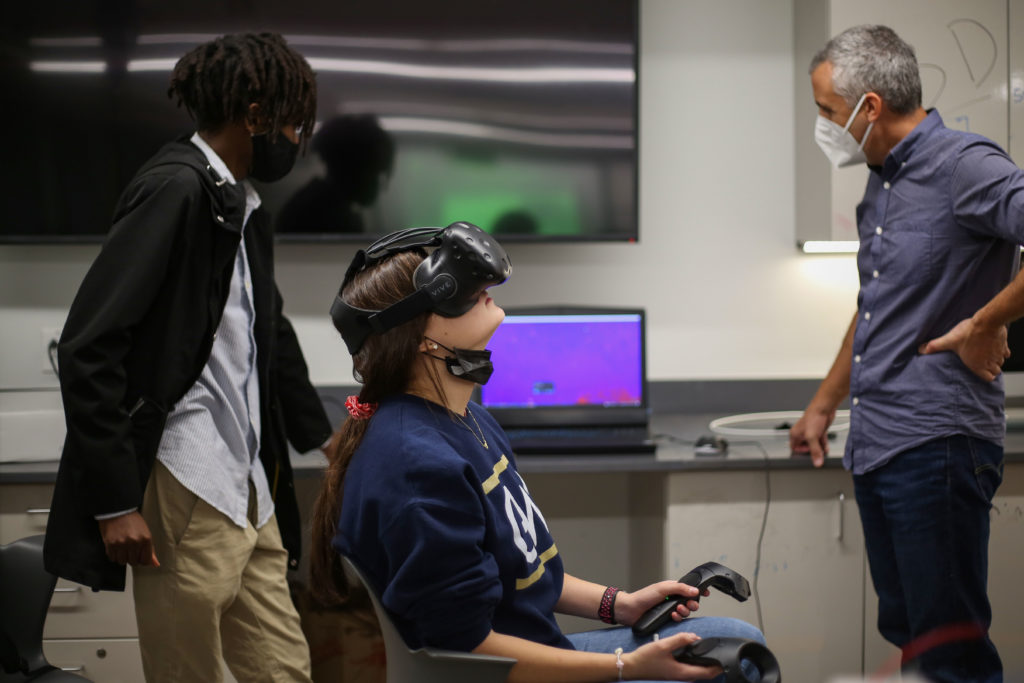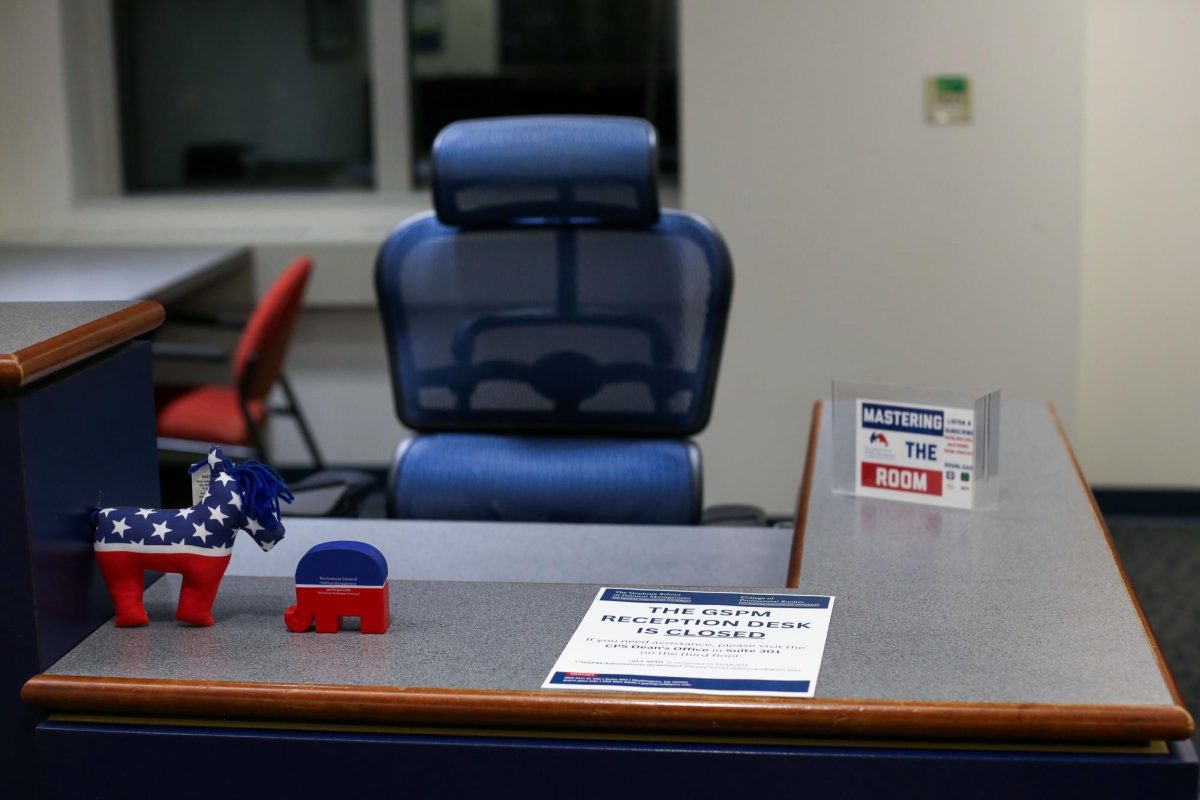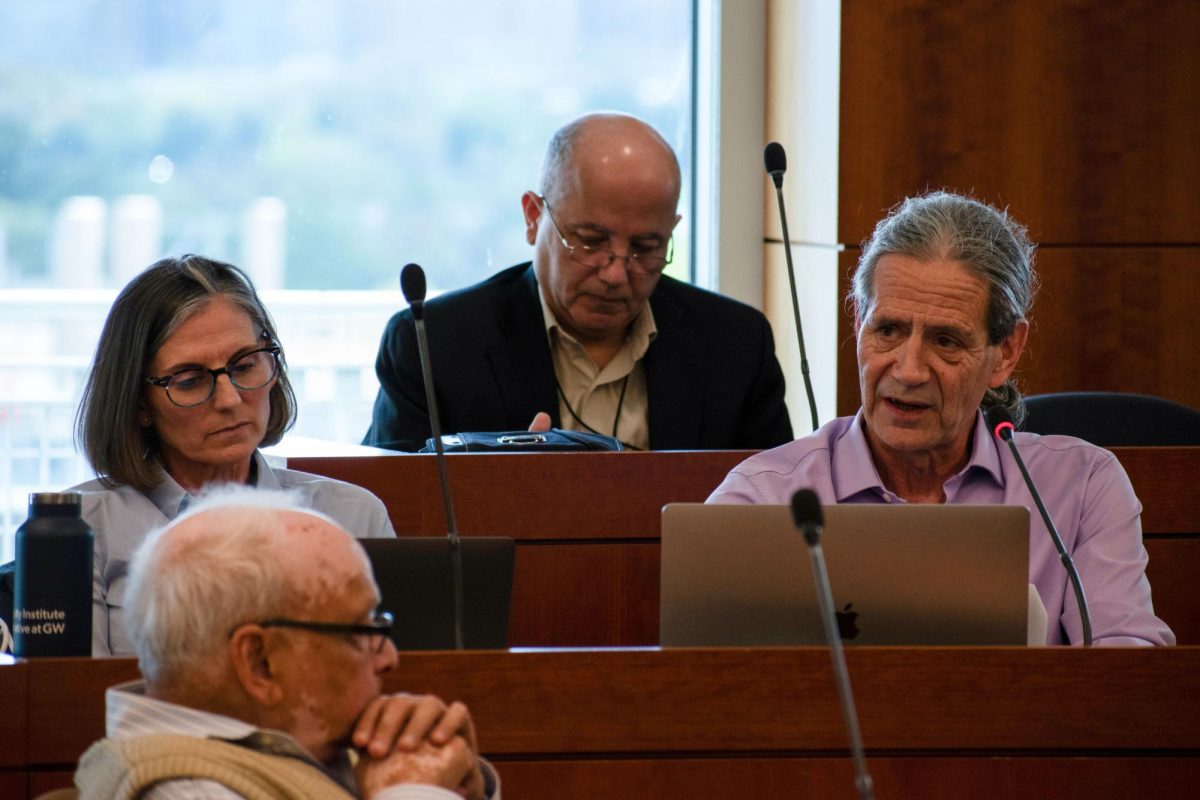In the basement of Corcoran Hall, a professor and a student are developing a virtual reality simulation to allow students to virtually travel through outer space.
Sylvain Guiriec, an associate professor of astrophysics and an astrophysicist at NASA Goddard Space Flight Center, said he and a student are coding a virtual reality program that allows astronomy classes to view celestial bodies like the Milky Way galaxy through a virtual reality environment for astrophysics. Other professors in the computer science department and the surgery department in the School of Medicine and Health Sciences are also working to introduce virtual reality technology, like simulated lectures and virtual reality headsets, into courses to immerse students in visuals that are relevant to their curriculum.
“I’m an astrophysicist so it will be implemented in introductory astronomy classes, not the advanced ones, really for the students who are not necessarily physicists,” Guiriec said. “I think it’s more important for them because we can show really a lot of basic things.”
Guiriec said they hope to improve the virtual reality environment for astrophysics this academic year to allow multiple students to each use a headset to be in the simulation at once so a professor can guide them through the experience. He said the program currently only has access to one virtual reality headset but plans to acquire more funding to obtain two to three more this year to allow an instructor to present to up to three students at a time.
“We can actually have multiple users using the virtual reality environment with an instructor who controls the visit,” he said. “So the next step is to show that we can actually create this visit, so at some point we will have more funding to broaden this.”
Guiriec said the virtual reality program can be adapted to disciplines outside of astrophysics, like history, to allow students to virtually experience visuals and events relevant to their courses, like historic battles.
“There’s an infinite potential with that – as soon as the system is in place you can just create the material that you want,” he said.
Adellar Irankunda, a senior majoring in astronomy and astrophysics who is working on the program with Guiriec, said the program provides astronomy students with experiential learning opportunities that are inaccessible outside of virtual reality.
“Astronomy is a very abstract concept,” he said. “You can read it in textbooks and you can also watch media on it, but things are explained to you and you don’t really get a first hand understanding for it because you can’t really go out into space.”
Hurriyet Ok, a professorial lecturer of computer science, said he received 13 Meta Quest 2 virtual reality headsets during the summer through a VR learning grant funded by Meta and Unity, a gaming software company, for his Augmented and Virtual Reality course. He said giving his students access to virtual reality headsets helps them gain first-hand experience and a better understanding of virtual reality technology.
“The moment they have their headset and put it on their head, they are mesmerized and amazed by this 3D world,” he said. “Although it’s all simulated, totally computer generated, people sometimes feel that they are in that created environment and interacting with digital objects and digital assets.”
Ok said the students in the course, which is open to undergraduate and graduate students in the computer science department, will use the headsets in conjunction with Unity’s virtual reality software to design their own virtual reality applications. He said students also incorporate computer science skills, like coding and programming, into their projects to make them more immersive.
“Through Unity, they learn how to create what I call their ‘dream story, dream journey,’ and through that they create their first virtual reality application,” he said. “It could be educational, it could be for fun.”
Keith Mortman, the chief of the division of thoracic surgery at the GW Hospital and an associate professor of surgery at GW, said he utilizes virtual reality to educate medical students and patients as they prepare to conduct surgery to remove tumors.
“They got a much better understanding of the anatomy and what was required of me to take out that mass safely,” he said.
Mortman said officials have discussed incorporating virtual reality materials into SMHS’ curriculum, specifically in first-year gross anatomy courses.
Virtual reality experts said the devices can simulate real-life situations in classrooms and provide alternative educational materials for students with learning disabilities and remote students to make higher education more engaging.
Sammy Popat, the interim director of the Mixed Augmented Virtual Reality Innovation Center at the University of Maryland, said virtual reality materials enable instructors to simulate emergency situations for medical students, like responding to a gunshot wound, that could not be recreated in a classroom otherwise.
“You’re actually being put in that position and seeing how quickly and how well you respond, and effectively learning that there might be some strengths and weaknesses to how you would actually act or react in that situation,” he said.
Popat said students with dyslexia can also use virtual reality materials to alter the font size and color of the text they read for their courses to better understand their readings, since dyslexia often causes text to appear distorted.
“The virtual reality headset provides an immersive experience where learning can happen in a way as a modality for that student that can be more customized at his or her learning preference,” he said.
Andrea Stevenson Won, an assistant professor of communication at Cornell University who runs Cornell’s Virtual Embodiment Lab, said virtual reality technology can be an alternative to Zoom meetings for professors who want to immerse remote students in the same content when conducting group activities.
“I think those can offer things like the ability for people to do group activities with shared content in ways that Zoom doesn’t support in exactly the same way,” she said.
But Won said virtual reality can also pose accessibility issues for people with vision and hearing impairments because of its emphasis on visual and audio content. The high cost of virtual reality headsets can also make them inaccessible for students, she said.
“Not everybody owns a VR headset, so if you want to provide that experience in the classroom, you need to think about supplying those headsets to everyone,” she said.








